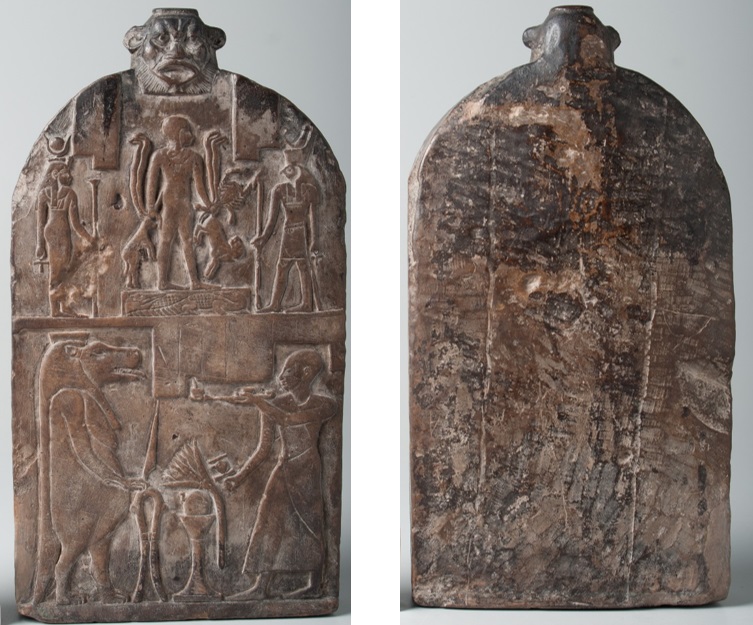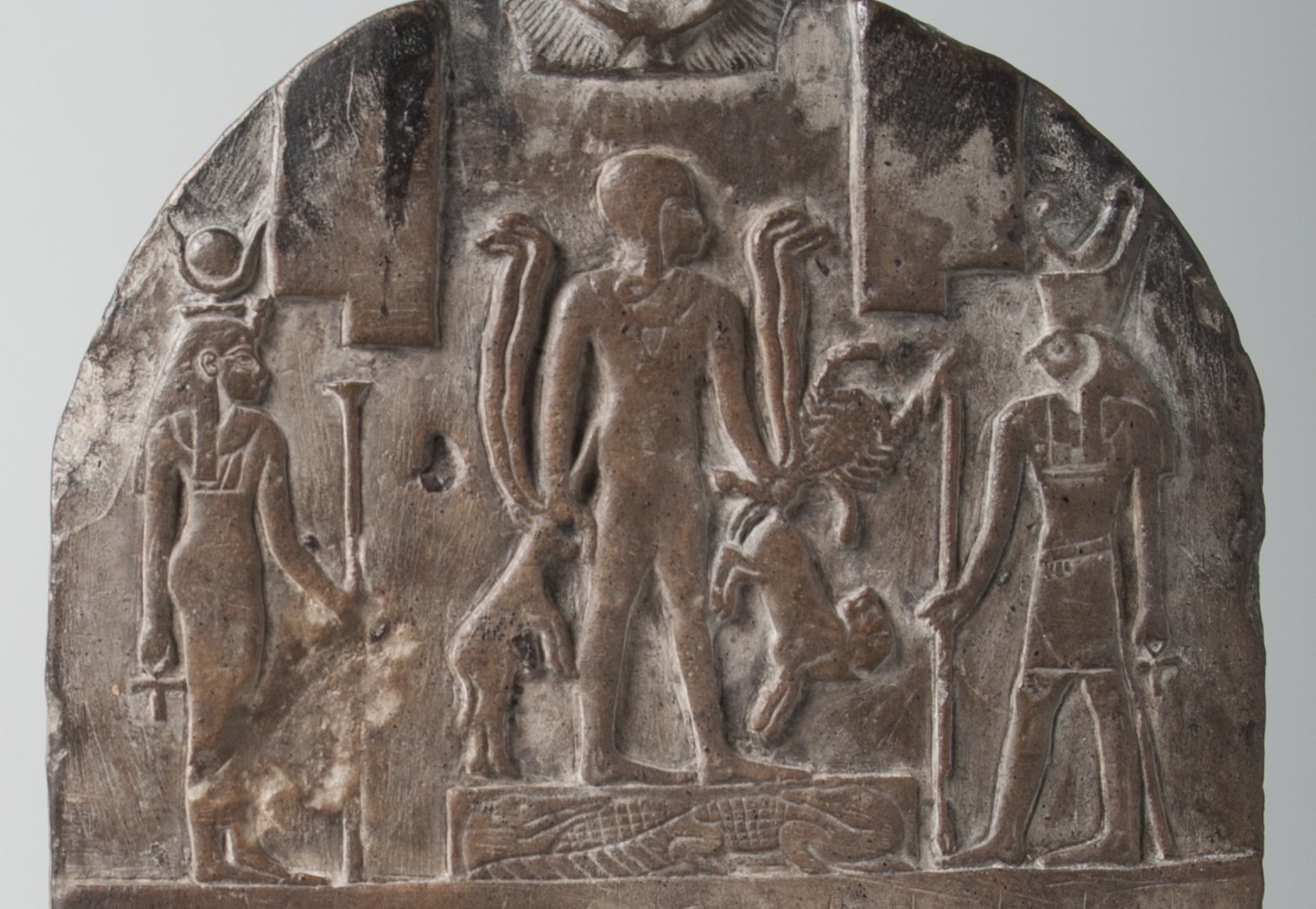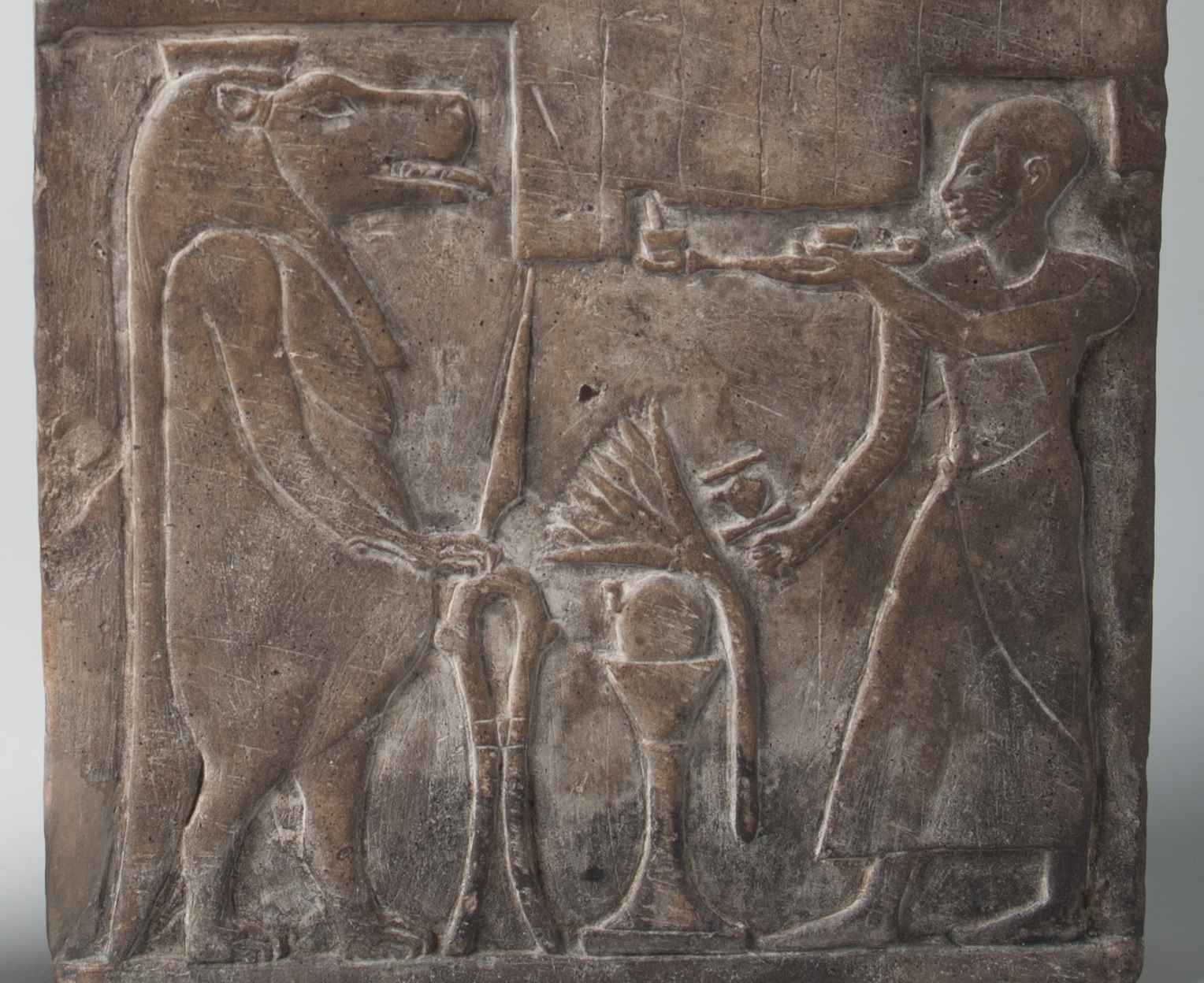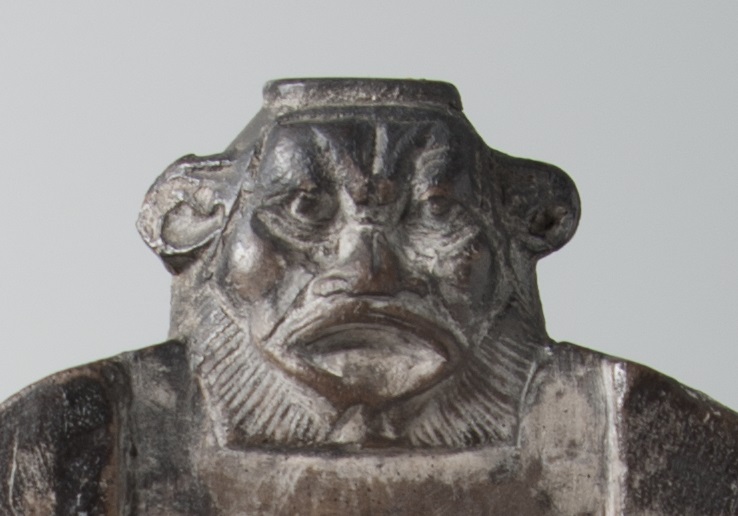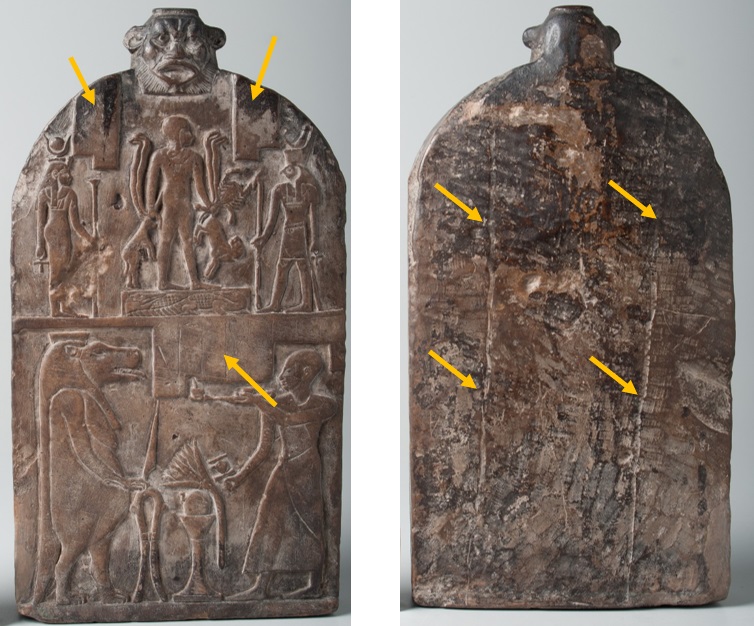It is possible that this stele is unfinished, although it shows possible signs of use, such as the darkened areas at the top where liquids were meant to be poured and the dark horizontal band at the bottom where they may have pooled. (These areas have been analyzed to identify possible residues, but the results were inconclusive.) Moreover, we should not assume that this stele required texts in order to work: one may read the absence of inscriptions as a sign that the images were potent enough on their own. Alternatively, inscriptions may have been painted onto the limestone, dissolving into the liquid poured over the stele and thus imbuing it with magic. It is also possible that the blank registers deliberately gestured to the existence of texts, with their outlines being sufficient to represent them. Perhaps the patron could not afford to have the stele inscribed, or perhaps no suitable craftsman was available to work on it.
Practically speaking, this remarkable object was a curative for snake bites and scorpion stings, part of a medical practice that regularly employed elements that we deem “magical” today. It may also have been used to facilitate the safe delivery of children in its patron’s home. The stele draws on the themes of protection, family, and healing. But beyond this, it is about the triumph of order over chaos. The child Horus appears here not only as someone who has been saved, but also as a savior. It is a victory for that little guy, and “the little guy”—all of us—over the malevolent forces of the universe, and the dangers that threaten the most delicate of lives.
This magical stele was a bequest from Harvard alumnus Gerhardt Liebmann, an artist and prominent member of the LGBTQ community in New York City. To learn more about this object, watch the Art Talk in the video above. If you’d like to read more about Horus on the Crocodiles stelae in general, take a look at the references below.
Jen Thum is the Inga Maren Otto Curatorial Fellow in the Division of Academic and Public Programs at the Harvard Art Museums.
Further Reading
James P. Allen, The Art of Medicine in Ancient Egypt (New York: Metropolitan Museum of Art, 2005).
J. F. Borghouts, Ancient Egyptian Magical Texts, Nisaba 9 (Leiden: Brill, 1978).
Jane Draycott, “Size Matters: Reconsidering Horus on the Crocodiles in Miniature,” Pallas 86 (2011): 123–33.
Annie Gasse, Les stèles d'Horus sur les crocodiles (Paris: Réunion des Musées Nationaux, 2004).
R. K. Ritner, The Mechanics of Ancient Egyptian Magical Practice. Studies in Ancient Oriental Civilization 54 (Chicago: The Oriental Institute, 1993).
R. K. Ritner, “Horus on the Crocodiles: A Juncture of Religion and Magic in Late Dynastic Egypt,” in Religion and Philosophy in Ancient Egypt, ed. W. K. Simpson (New Haven, Conn.: Yale University Press, 1989), 103–16.

